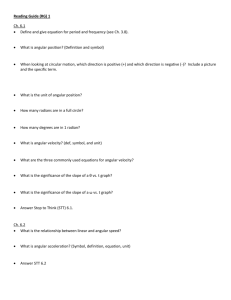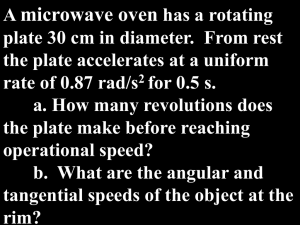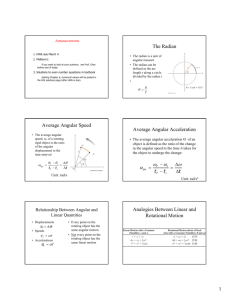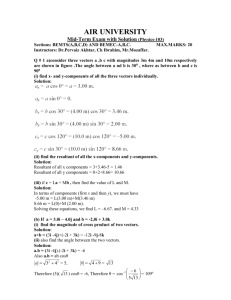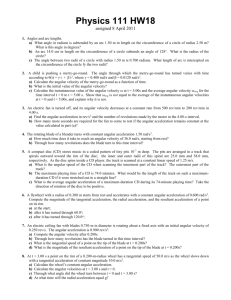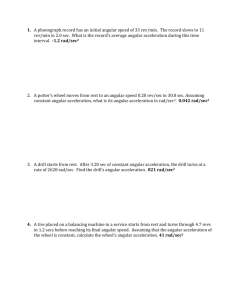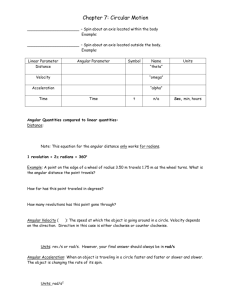Honors Physics: Rotational Kinematics Practice
advertisement
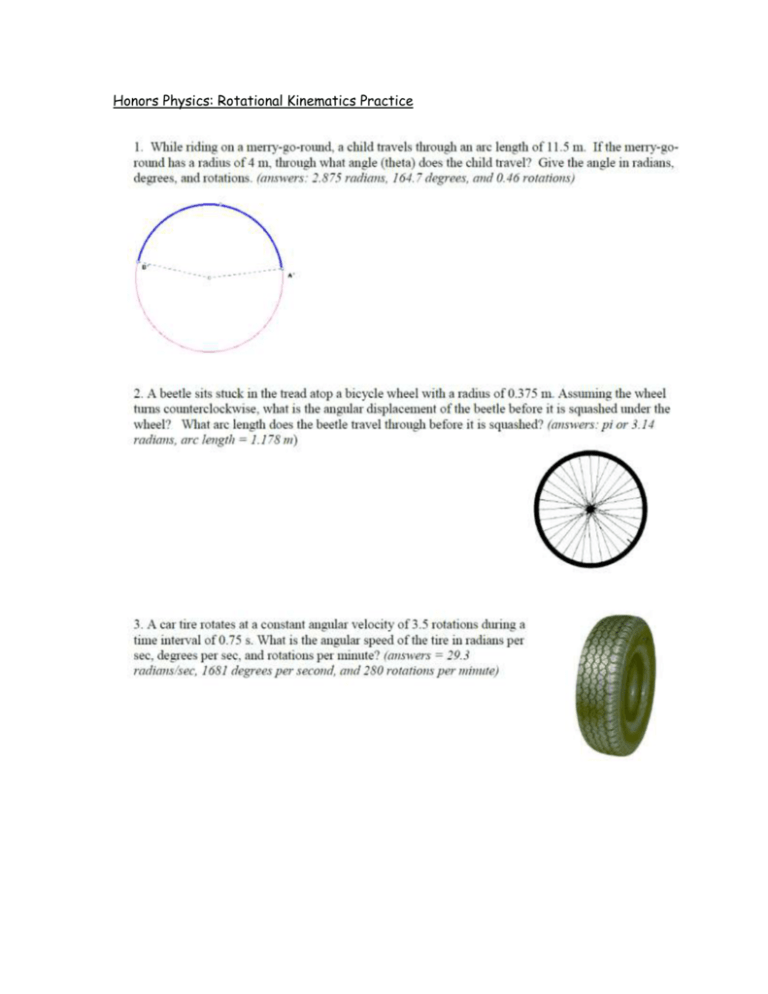
Honors Physics: Rotational Kinematics Practice 7a) The model airplane in the figure has a mass of 0.90 kg and moves at a constant speed on a circle that is parallel to the ground. The path of the airplane and its guideline lie in the same horizontal plane, because the weight of the plane is balanced by the lift generated by its wings. Find the tension T in the guideline (length = 17 m) for speeds of 19 m/s and 38 m/s. 7b) A 1200 kg car rounds a corner of radius r = 45 m. If the coefficient of static friction between the tires and the road is the car can have in the corner without skidding? , what is the greatest speed 8) A grindstone rotates at constant angular acceleration 0, it has an angular velocity of horizontal, at the angular position . At time t = and a reference line on it is . (a) At what time after t = 0 is the reference line at the angular position (b) Describe the grindstone's rotation between t = 0 and t = 32 s. (c) At what time t does the grindstone momentarily stop? = 5.0 rev? 9) While operating a carnival ride called the Rotor (a rotating cylindrical ride), you spot a passenger in acute distress and decrease the angular speed of the cylinder from 3.40 rad/s to 2.00 rad/s in 20.0 rev, at constant angular acceleration. (a) What is the constant angular acceleration during this decrease in angular speed? (b) How much time did the speed decrease take? 10) A cyclist traveling at 5.0 m/s uniformly accelerates up to 10.0 m/s in 2.0 s. Each tire of the bike has a 35 cm radius, and a small pebble is caught in the tread of one of them. (a) What is the angular acceleration of the pebble during those two seconds? (b) Through what angle does the pebble revolve? (c) How far around the wheel does the pebble travel during that accelerating interval? 11) In a microhematocrit centrifuge, small samples of blood are placed in heparinized capillary tubes (heparin is an anticoagulant). The tubes are rotated at 11500 rpm, with the bottom of the tubes 9.07 cm from the axis of rotation. (a) Find the linear speed of the tubes. (b) What is the centripetal acceleration at the bottom of the tubes? 12) Suppose the centrifuge in Problem #5 is just starting up, and that it has an angular speed of 8.00 rad/s and an angular acceleration of . (a) What is the magnitude of the centripetal, tangential, and total acceleration of the bottom of a tube? (b) What angle does the total acceleration make with the direction of motion?



